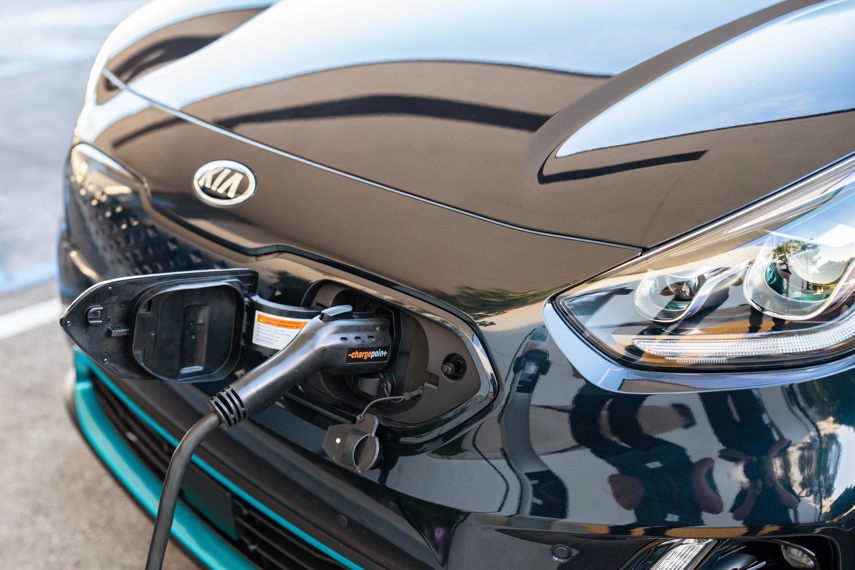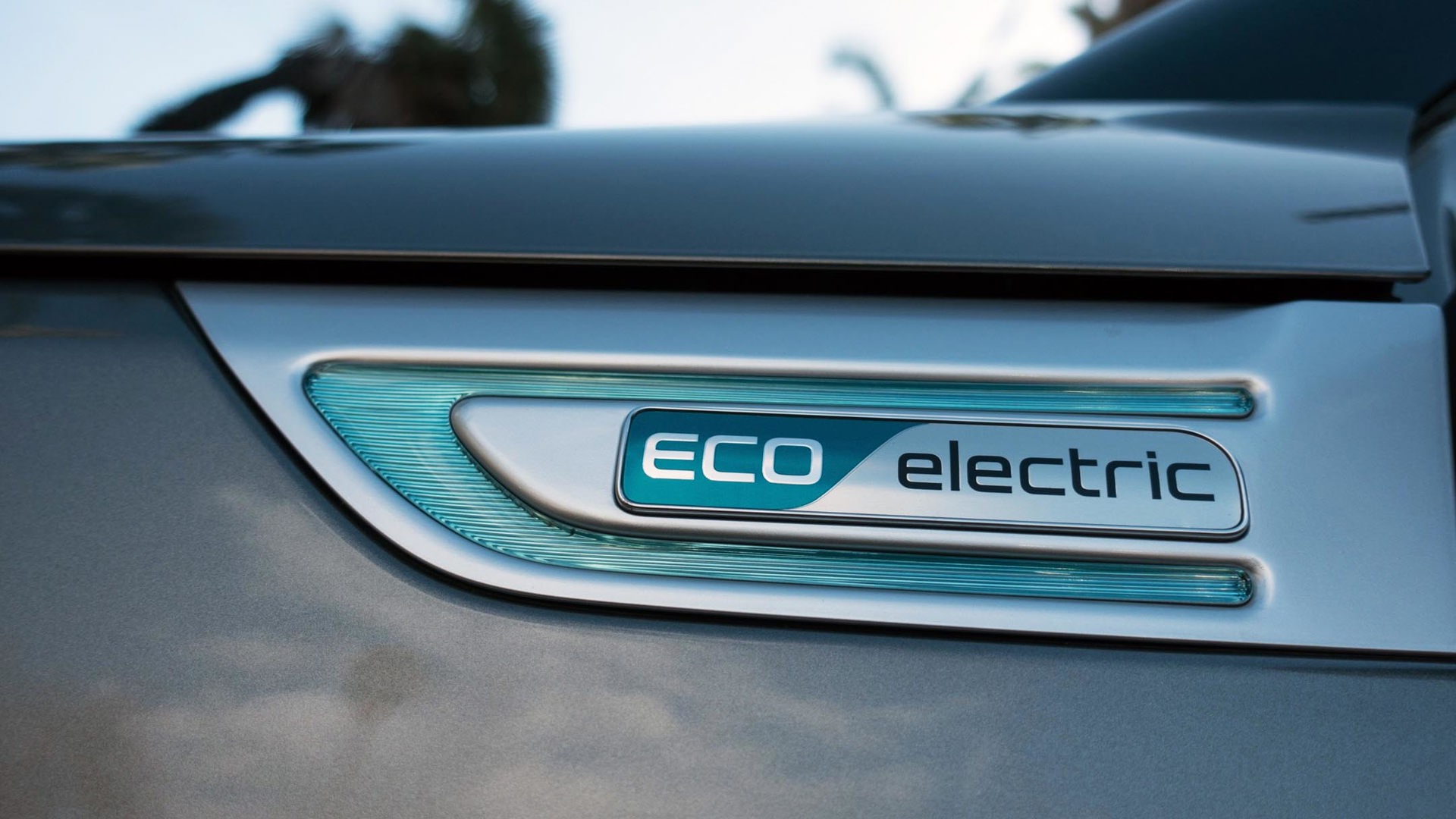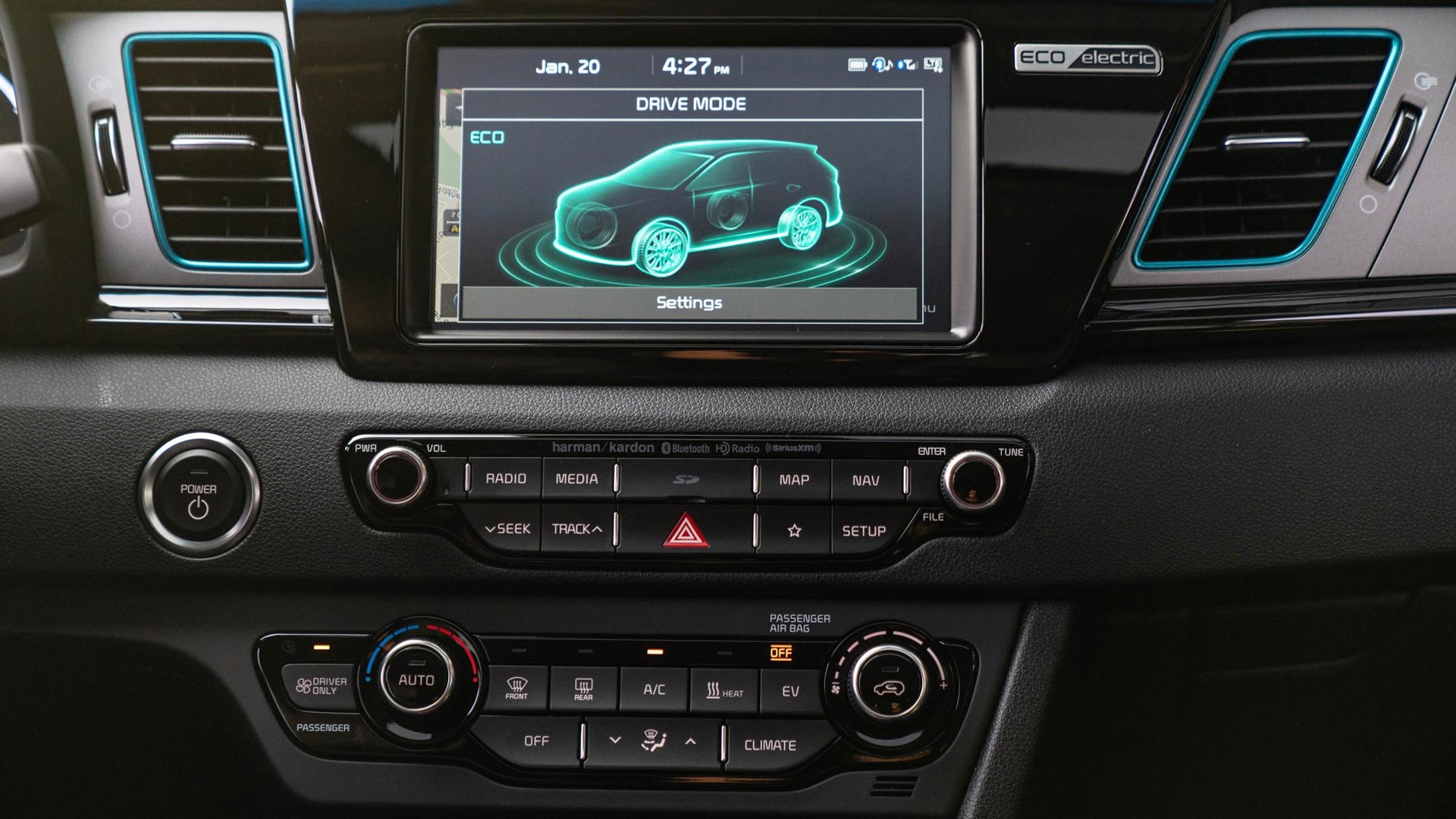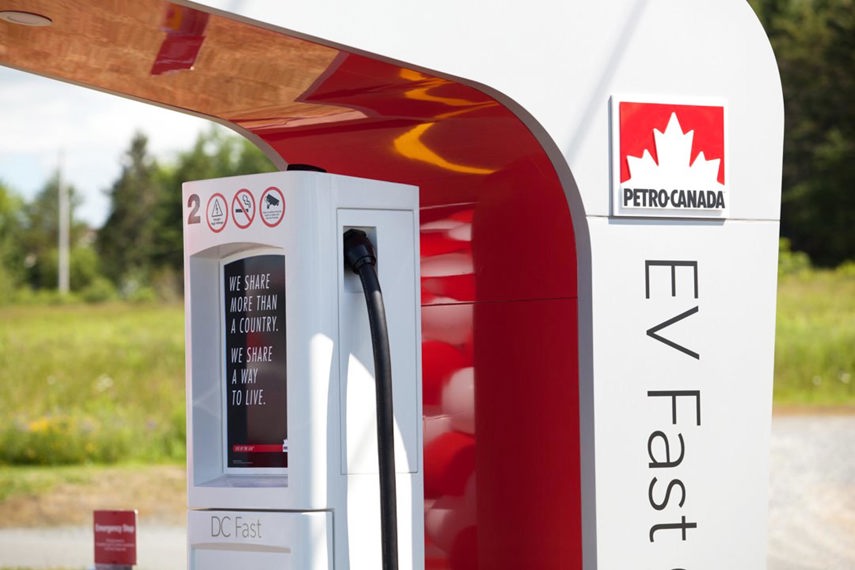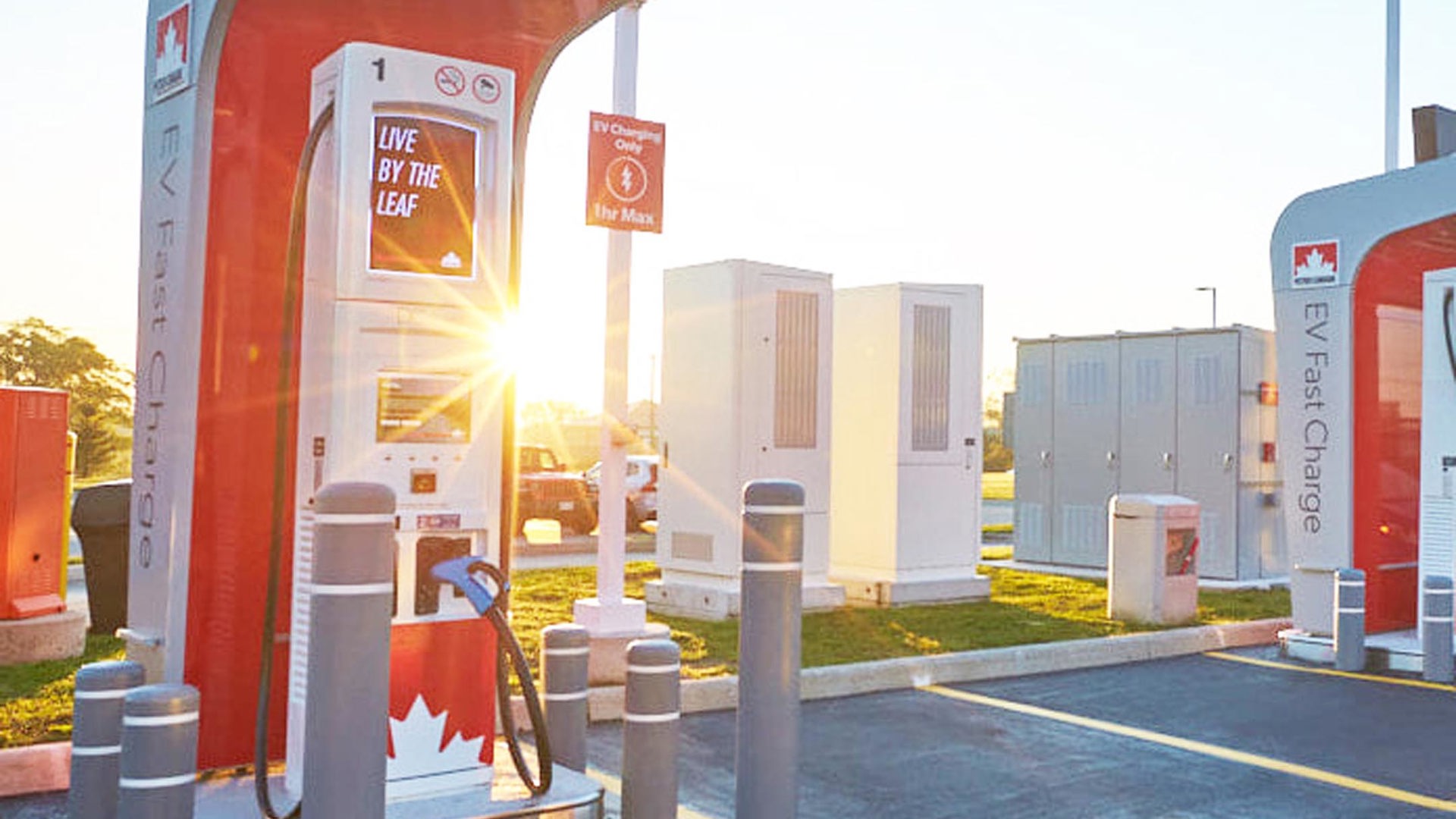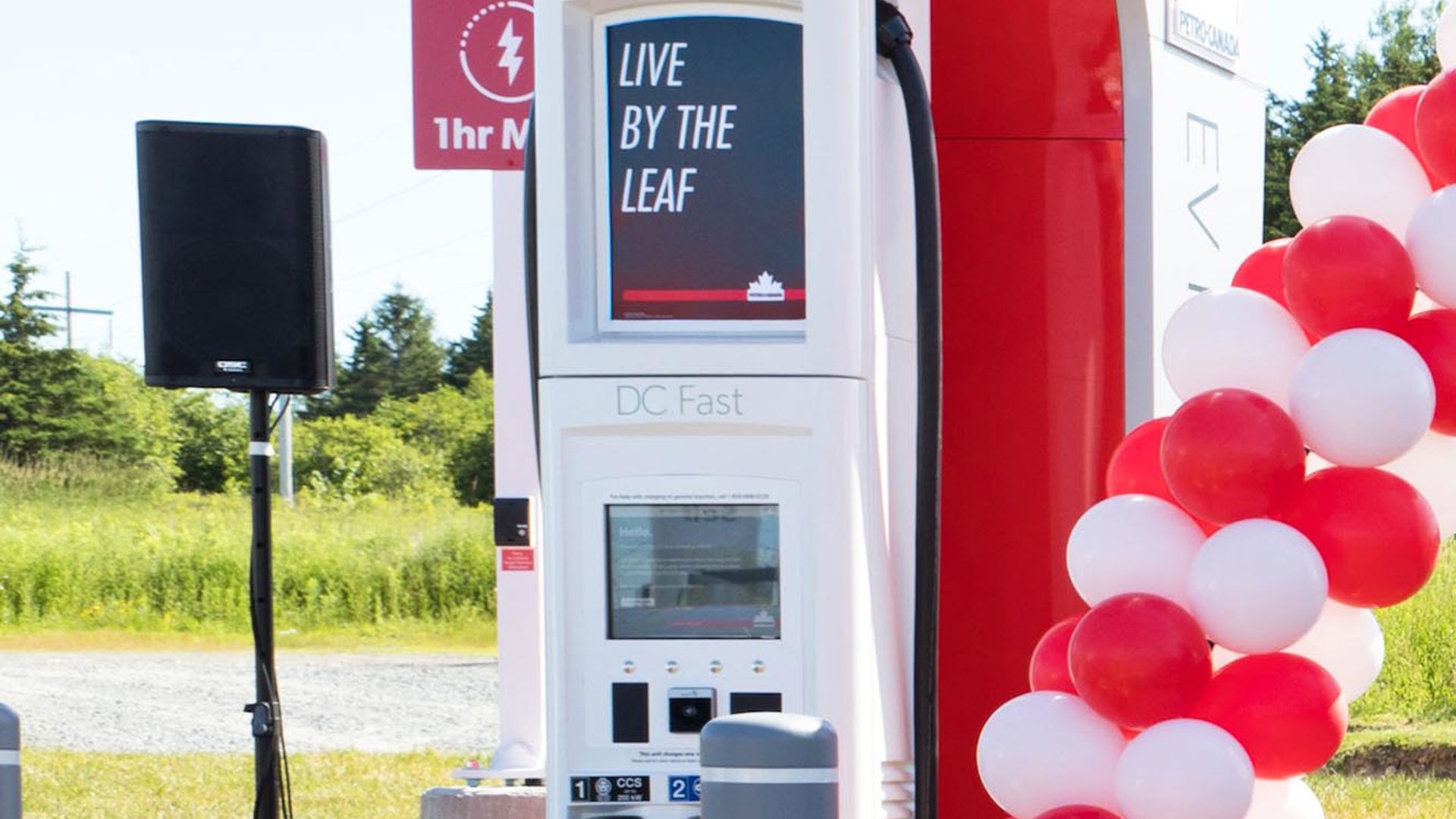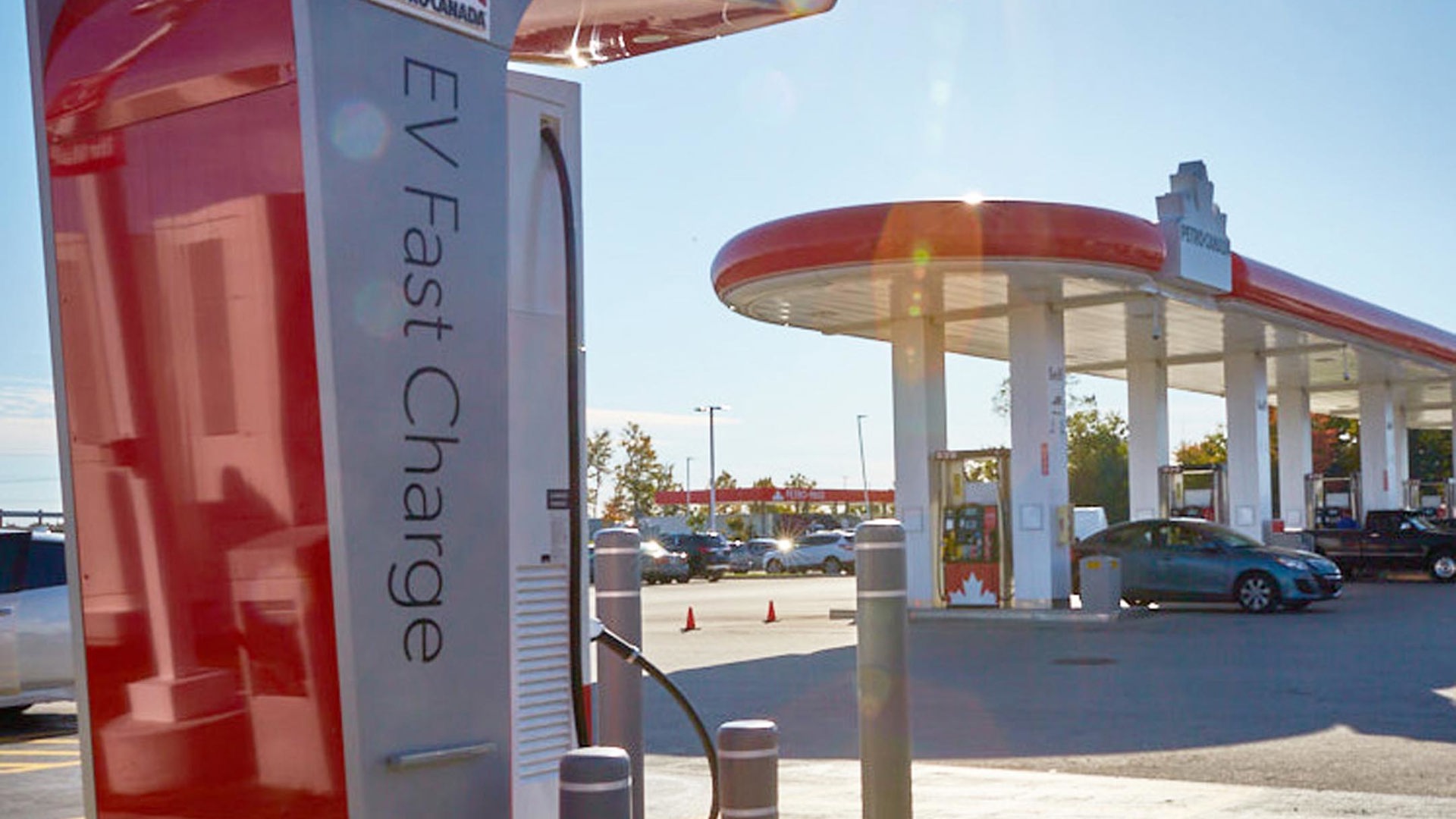For years, we’ve been promised a world of electric vehicles, and it’s finally arriving, and that means more choice than ever before. From short-range, low-budget runabouts to road-trip-ready luxury SUVs and hypercars – and everything in between – green-conscious buyers have never had such a wealth of options.
Still, a recent study from Kia says that 82 per cent of Canadians have never driven an EV. At that rate, it’s hard to imagine they’ll be a common sight in driveways across the country any time soon. What is the automaker doing to get more drivers into electric vehicles? We spoke with Kia Marketing Director Michael Kopke to find out.
The brand’s study found four key concerns and misconceptions that made Canadians reluctant to make the switch; and they likely won’t come as a surprise: charging station availability, charge time, range, and price.
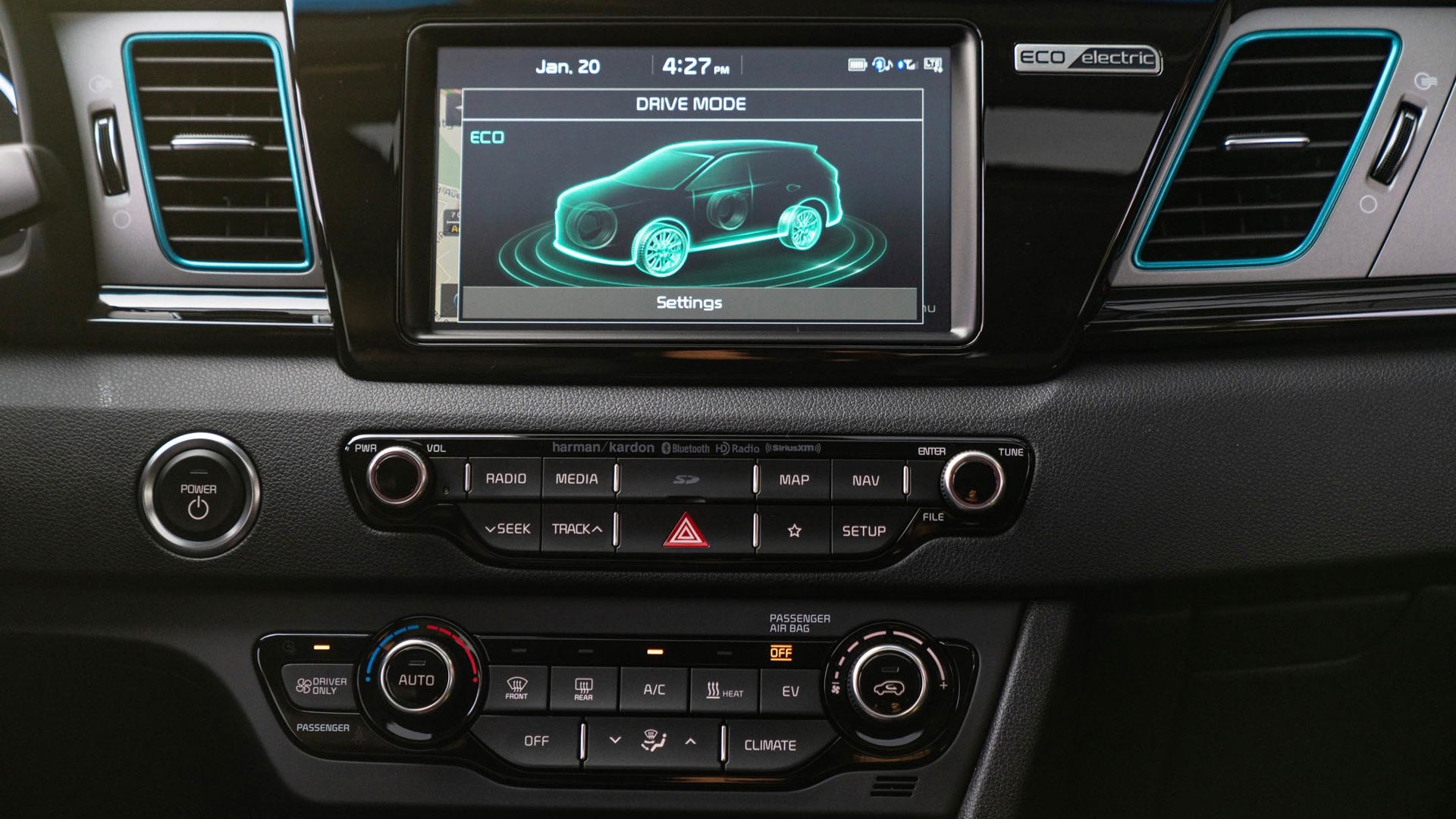
Range Anxiety
The most common concern is also the easiest one to solve, according to Kopke. Even from childhood, he said, “you’re used to being in a car. And then mom or dad – or yourself – once a week stops at this thing called the gas station.”
It’s a habit we’re all used to. But we tend to have a different relationship with batteries. “People think about, ‘Oh my god, you know that one time last year when my iPhone died, and I needed to call my mother,’ that’s kind of thing people have in their head,” said Kopke.
But EVs aren’t like combustion-engine cars, since they can be charged at home. “What you realize very quickly within a couple of days is that you leave your house with a full tank of gas every single day.”
Kopke also said that drivers don’t travel as much as they think they do. “You might have a car that can do between 400 and 500 km on a full tank of gas […] but no one measures that they are only three kilometres from work.” Considering most current EVs have at least 300 km of range, that’s plenty of trips to the office – unlike most current phones, which struggle to last the day.
To help combat the spectre of range anxiety, Kia launched a campaign with social media influencers who, driving an EV, went about their everyday lives and share the experience with their audience. “They can communicate to the people that follow them that, ‘My reality is I go to the grocery store and I come home. I go to lunch at a restaurant, you know, getting charged while I’m having lunch in the restaurant for an hour’; some of these real-world things that need to come across,” Kopke said. [This interview was conducted before indoor dining restrictions. –Ed.]
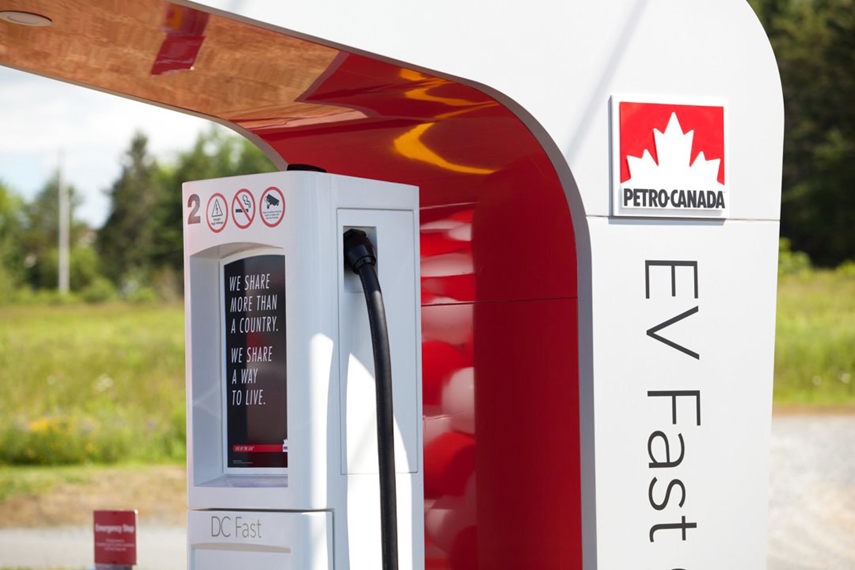
Charging Availability
“You’re used to the gas station on every corner,” Kopke said, and while there aren’t visible charging stations on every corner, there are far more plugs than there are gas pumps. Fifty per cent of Canadians who said they wouldn’t consider an EV, however, said they thought finding a charging station was a nuisance; and 30 per cent said they couldn’t install one at home.
“There is charging infrastructure all over Canada – over 14,000 [charging stations] already – and you don’t need to have them in a gas station environment,” Kopke said. So why don’t people know they’re there? “The charging stations themselves are pretty small; they sit against the public parking stall [and] there’s always a car parked in front of them. [They’re] not part of this large geographical thing like all the gas stations.”
Kia said there has been 50 per cent year-over-year growth in the number of EV charging stations, a trend that doesn’t seem to be falling anytime soon – but public charging station growth may not really matter. Despite people’s worries about public charging infrastructure, 71 per cent of charging is done at home, Kia said, suggesting that most drivers are not making regular use of those public stations.
To help dispel the myths about charging, Kia is taking a two-pronged approach. The first, a website “designed around the education aspects,” Kopke said. The second, Kia’s ambassador program, tasked with getting vehicles out and about, to show people that “switching isn’t really that hard.”
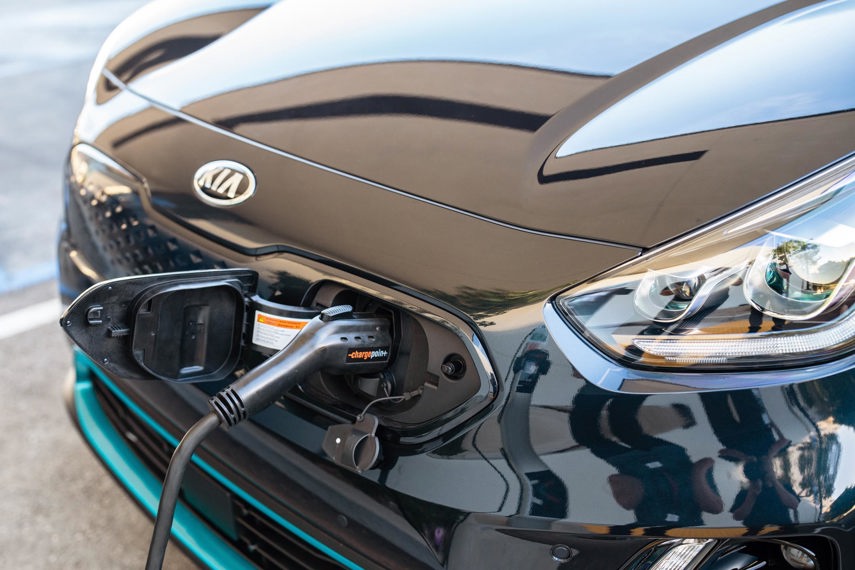
Charging Times
“The reality is our cars sit idle way more than they are active,” Kopke said. And every stop is an opportunity to charge – no need to mind a gas pump, just connect the charger and go about your business.
What about road trips? According to Kopke, 500 km – say from Montreal to Toronto – is a very common distance for most people. (And yes, we know that some people will drive thousands of kilometres at a time without a stop, or at least think they do.) “Wherever you’re stopping during that journey – you’re stopped for five minutes or you’re stopped for five hours – you can plug in.” Rest stops along those major corridors are equipped with fast chargers. So when you stop for a coffee or a bathroom break, you’re taking 20–30 minutes, and that’s enough to put several hundred kilometres back into the car.
You don’t need to go from empty to full every time – in fact, cars charge most efficiently up to around 80 per cent. Every Kia vehicle (and most other EVs) can charge up to 80 per cent in under an hour on a Level 3 charger, letting you get back underway in less time than you might expect.
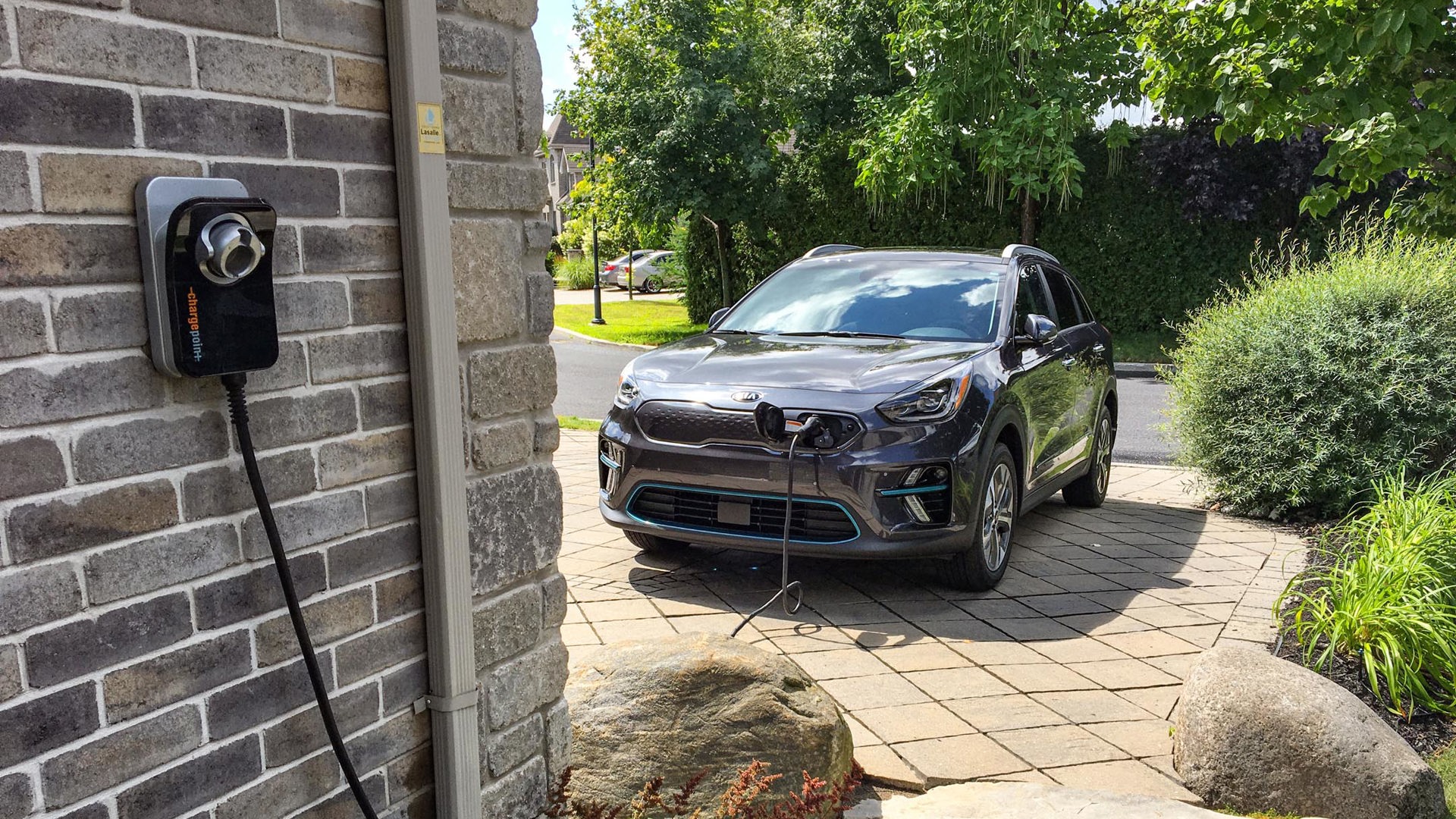
Cost of Ownership
Kia said its survey suggested 59 per cent of Canadians who wouldn’t consider an EV thought that EVs were “too expensive and costly to maintain.” While prices are higher currently, they are helped by a $5,000 federal incentive and up to $8,000 more depending on province. Kia’s website lets you explore the cost of ownership, and also see the difference in prices between gasoline and electricity to show you how much you could potentially save in an EV versus a gas-powered car.
Kopke pointed out that while maintenance is still required – they have fluids, filters, brakes, and suspension as with any car – it’s significantly less intensive than gas or diesel cars, which need oil and other fluids changed on a regular basis.
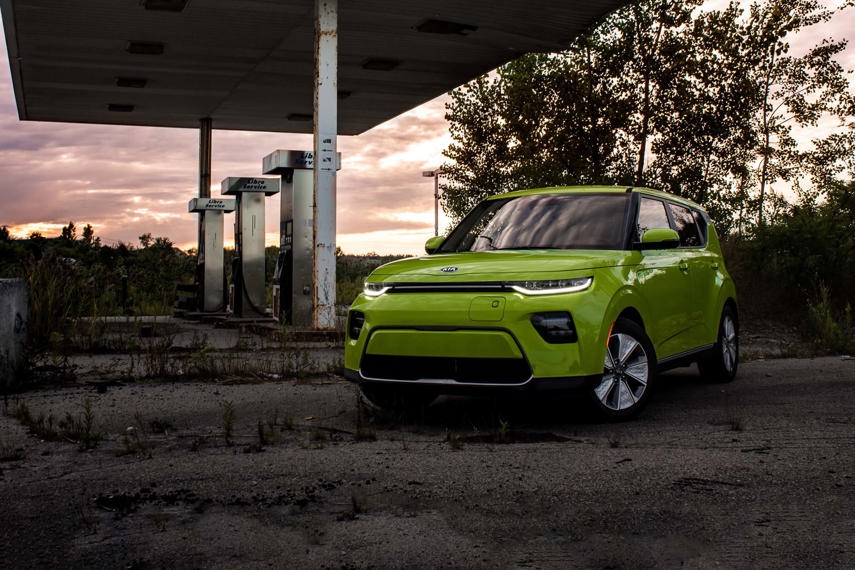
The solution to most of the myths, Kopke said, is getting people more experience with electric vehicles – low adoption is a challenge in and of itself. When potential buyers get into a cab or a ride-hail car that is electric, they learn more about the cars; but that’s not happening yet.
For buyers, there are relatively few EV models, yes, but inventory in the country has also been limited. The cars are selling quickly and there aren’t many to sell. Kopke said that Kia has adjusted supply (with Hyundai reporting similarly) in response to projected demand through 2021. “We’re confident that when [customers] go into a certified Kia dealer, they will be able to find a vehicle.”
Because ultimately, the best way to get people used to a good new idea is to let them try it. Just think about the reaction to the internet back in the late 1990s, then look at how far we’ve come.
